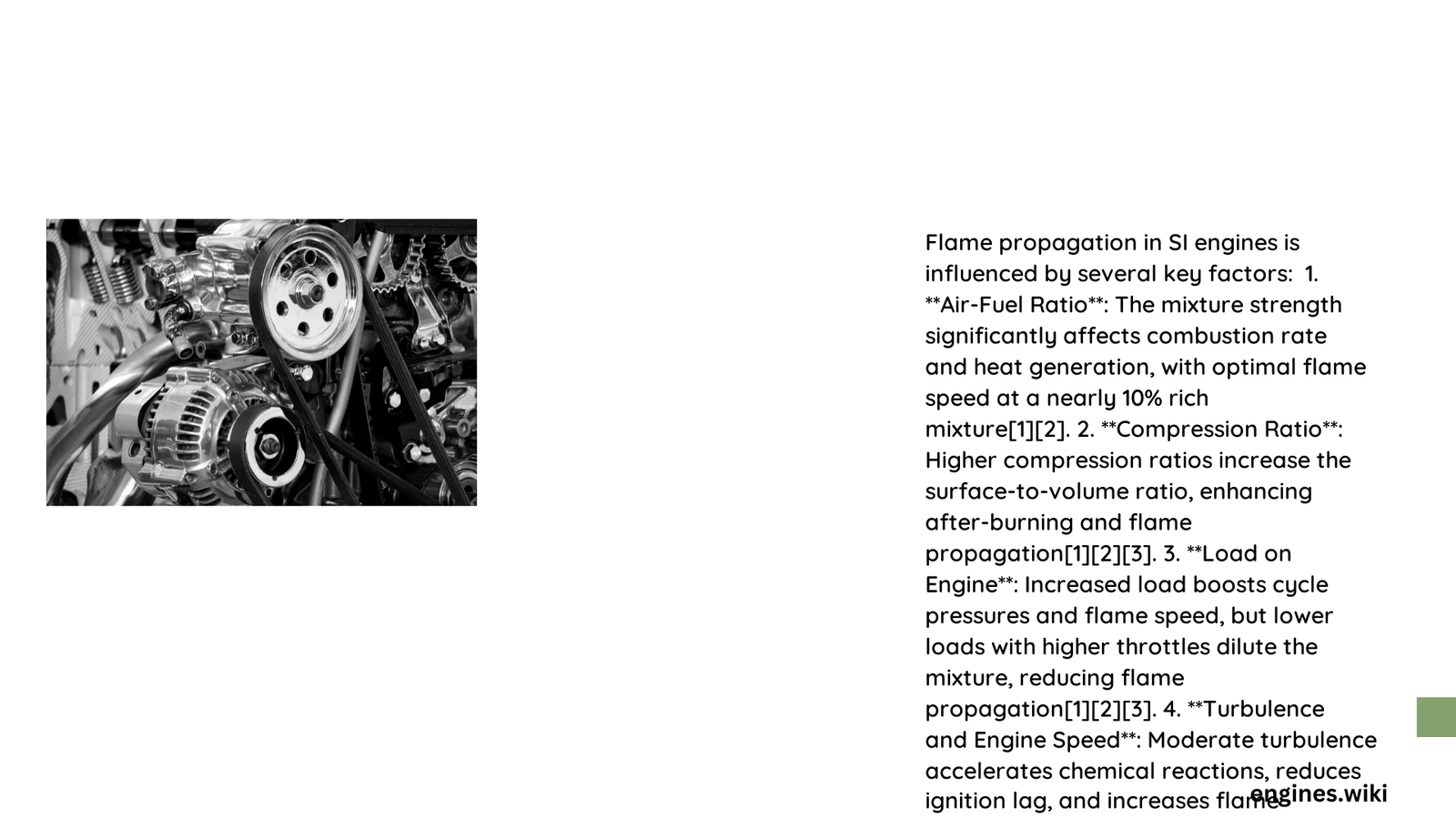Flame propagation in spark-ignition (SI) engines is a complex phenomenon influenced by multiple interconnected parameters. Understanding these factors is crucial for optimizing engine performance, fuel efficiency, and combustion characteristics. Engineers and researchers continuously investigate how variables like air-fuel mixture, compression ratio, turbulence, and chamber geometry impact the speed and quality of flame spread during the combustion process.
What Determines Flame Speed in SI Engines?
How Does Air-Fuel Ratio Impact Flame Propagation?
The air-fuel ratio plays a critical role in determining flame speed. Research indicates that:
- Optimal Mixture Range: Maximum flame speed occurs at a slightly rich mixture (φ ≈ 1.1-1.2)
- Laminar Burning Velocity: For isooctane, peak velocity reaches 26.3 cm/s at φ ≈ 1.13
- Performance Variations:
- Lean mixtures (φ < 1): Reduced flame speed
- Rich mixtures (φ > 1.2): Decreased combustion efficiency
| Mixture Type | Equivalence Ratio (φ) | Flame Speed Impact |
|---|---|---|
| Lean | < 1.0 | Significantly Reduced |
| Stoichiometric | 1.0 | Moderate |
| Slightly Rich | 1.1-1.2 | Maximum |
| Very Rich | > 1.2 | Decreased |
What Role Does Compression Ratio Play?
Compression ratio significantly influences flame propagation by:
- Increasing end-of-compression stroke pressure
- Elevating temperature before combustion
- Potentially increasing knock tendency
How Does Turbulence Affect Flame Speed?
Turbulence is a crucial factor in flame propagation:
- Moderate turbulence accelerates chemical reactions
- Reduces ignition lag
- Increases overall flame speed
- Excessive turbulence can lead to detonation
What Impact Does Engine Speed Have?
Engine speed influences flame propagation through:
- Increased turbulence intensity
- Consistent crank angle for flame propagation
- Need for dynamic spark advance
How Do Combustion Chamber Characteristics Influence Flame?
Key chamber design factors include:
- Volume: Smaller volumes increase surface-to-volume ratio
- Shape: Geometry affects flame travel distance
- Spark Plug Location: Determines flame propagation path
- Cooling Efficiency: Surface area impacts heat dissipation
What Are the Practical Implications?
Practical considerations for optimizing flame propagation:
- Continuously adjust ignition timing
- Maintain near-optimal air-fuel ratios
- Design efficient combustion chambers
- Consider engine-specific performance requirements
Advanced Insights

Modern computational fluid dynamics (CFD) and advanced measurement techniques allow engineers to:
- Simulate flame propagation with high precision
- Predict combustion characteristics
- Optimize engine design parameters
- Reduce emissions and improve efficiency
Conclusion
Understanding the multifaceted nature of flame propagation requires a holistic approach, integrating thermodynamics, fluid mechanics, and chemical kinetics.
